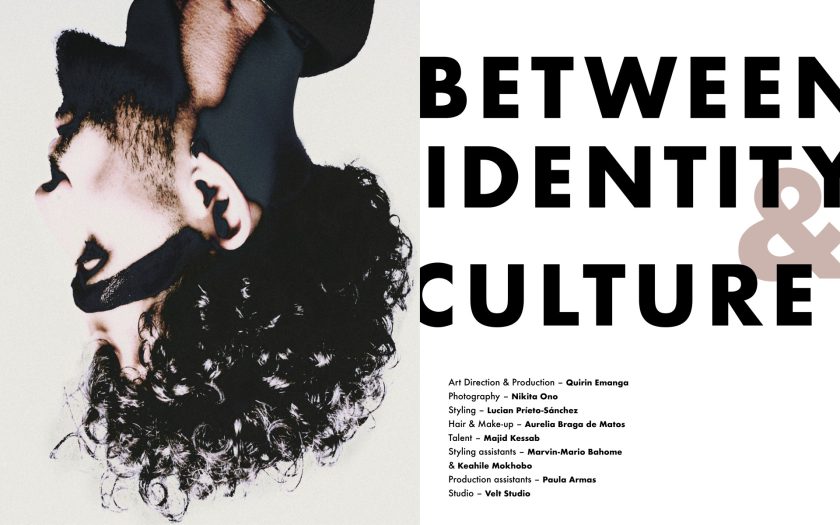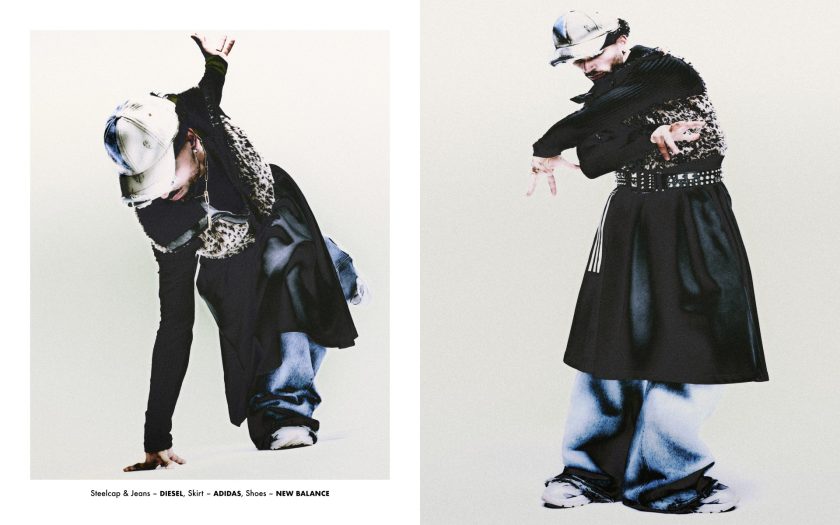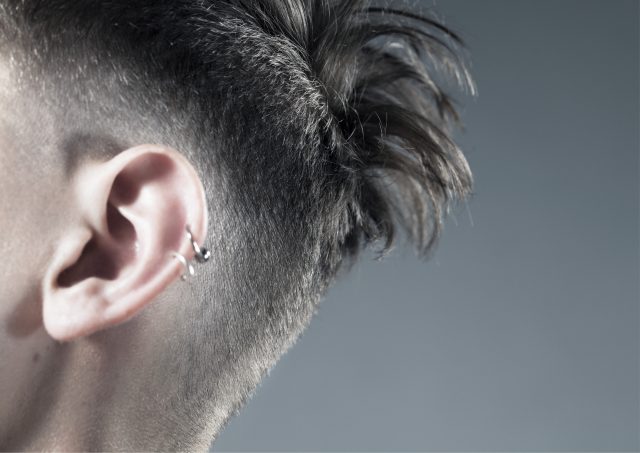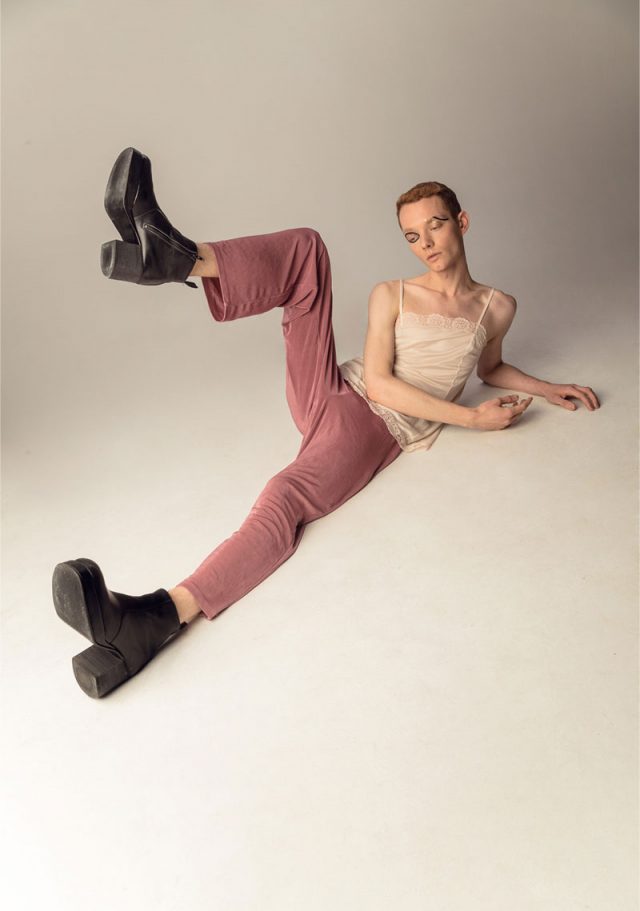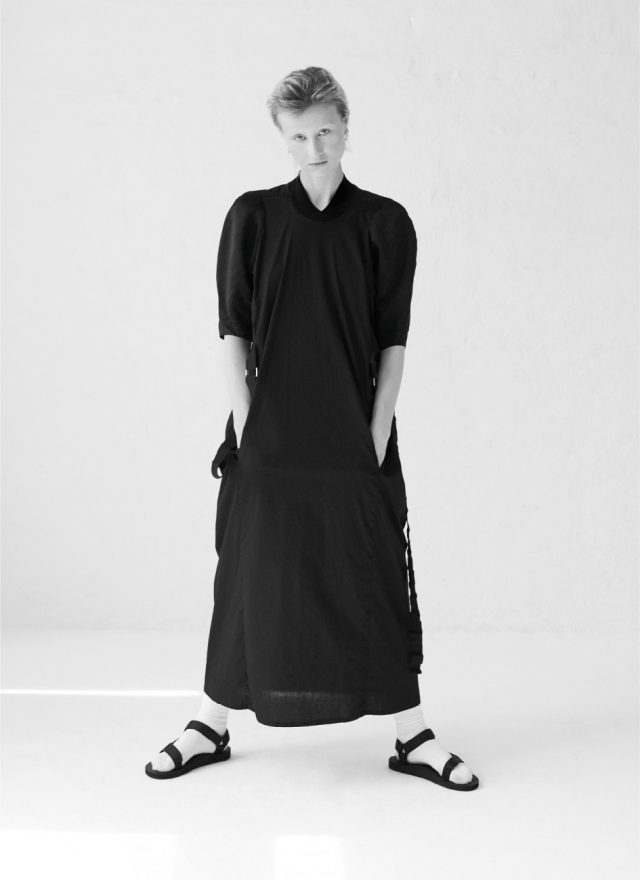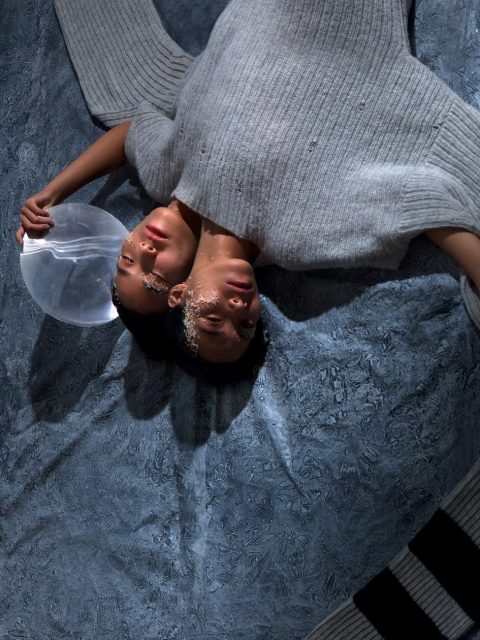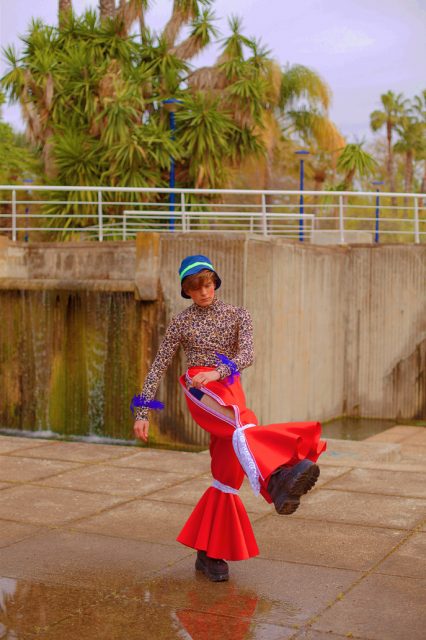If you were asked to think of the backbone of a Red Bull documentary, a gut-wrenching tale of a Kurdish family having to flee their home for Germany is probably one of the last things you would conjure up. But this is the storyline of their new short film Roots of my Rhythm, which follows German-Kurdish hip-hop dancer Majid Kessab and his father as they take a trip to their homeland together.
The opening scene features Majid marching through the desert. The satsuma sun melts into the clouds behind his black and white checkered Keffiyeh-crowned head. “What is the reason you dance?” he asks in German. The documentary is full of postcard moments – laughter, tears, fond memories and defeats. But above all, it is a story of perseverance and love.
In this exclusive Œditorial, we speak to Majid about what it means to be Kurdish, reconnecting with his roots and the essence of dance.
Œ: What was your upbringing like? What impact did your heartfelt story of having to flee to Germany have on you?
Majid: I was very young when we fled to Germany – I was three years old. I can’t remember anything. I just heard the stories, which made me always want to make my parents proud in everything I did. I grew up in Krefeld, where I am right now. I didn’t want to be a troublemaking son because I knew they had done everything to give us a good life and raise us in a good way. I think that’s the real reason I am where I am today. I’ve always committed to working hard on myself, my vision and goals. My family’s story motivated me to achieve everything I have.
Œ: What does being Kurdish mean to you?
Majid: It’s my roots. It’s my family. It’s who I am. I sometimes think others describe Kurdish people better than we can ourselves. I have been told a lot that we are one of the communities that are cool with everybody because we understand this feeling of being an outcast. But these struggles empower us and make us rebellious. I think it’s an energy, a mindset. Everything I touch, I give one hundred percent, whether that’s my business, my dance routines or an event I’m organising. Especially if I feel that someone has treated me unfairly, I will always stand up for myself. No one will ever put me down. I think that’s what being Kurdish means to me: being a freedom fighter.
Œ: In the Red Bull documentary you visit Kurdistan with your father. How did this project come about?
Majid: The original idea of Red Bull was to have a competitive documentary about my life focused on the journey of this dance competition but as we were filming, the director had this idea of revisiting my roots. The crazy thing is, I didn’t do my best in the competition. I didn’t even win. I lost the first or second round. The previous years, I had won them all. That’s when we thought, “Ok, it’s destiny to do it this way instead.” So the narrative evolved into the story of my father and this is where we came up with “Roots of my Rhythm”, an exploration of my life and culture.
Red Bull have never done this kind of political documentary before so everything was happening with such a natural flow. It was a bit rebellious because it talks about Kurdistan, which a lot of people do not accept yet. It happened so spontaneously but I’m really happy it turned out this way and not just a documentary about a dancer. It was more just doing, seeing where it goes and exploring. The script got changed two times so it was a work of improvisation led by our feelings and emotions. We still have so much footage left because we couldn’t fit it all into the film *laughs*
Œ: Can you remember how you felt when you first stepped off the plane in Iraq?
Majid: Yeah, when the first time I stepped off the plane, it was kind of exciting for me because I knew it was going to be the first time I was going to explore my roots rather than just visit Iraq. My parents arrived before me so they welcomed us when we touched down with the whole crew. It was also the first time I had my friends with me to show them where I come from. I was really happy because I knew I will never explore it again in this way. So there was this refreshing energy and vibe.
Œ: In Roots of my Rhythm you describe a time where you thought to yourself “you are a Kurd, but you don’t know the meaning of it”. How can the second generation stay connected with their ethnic roots? If you have children, how will you ensure they will also stay connected to their roots?
Majid: I mean the answer is already in the question. You need to stay connected: visit your homeland often, talk about it, listen to your parents and take the traditions with you. Don’t forget about these things but also don’t forget where you are living right now. I live in Germany – I still have to fit myself into here too. I’m still German so my lifestyle is also German. Since I’m still connected to my family, it’s easier. We speak the language and my parents are around a lot. If you’re not able to talk the language or see your family, you can watch some movies or find the traditions present in your local community.
When it comes to having kids, I think it will already happen through my family since we are so connected. All of my nieces and nephews grow up surrounded by their uncles, aunts and grandparents, which is a typical Kurdish thing – to always be together. We don’t meet once a week, we are together almost every day. We eat together at my parent’s place, that’s still our regular meeting spot. Through the family, we show them the culture and the celebrations. We have this one celebration called Newroz, it’s kind of like New Year’s, that’s my favourite. But yeah, as much as it’s important to teach them, I don’t want to only teach these things. There should be no straight path of “you are only Kurdish”. No. I just don’t want them to forget. But I guess it would be hard not to with all the family around them *laughs*
Œ: How does dance help you reconnect with your roots?
Majid: We Kurdish people, we dance a lot. We have a lot of music and rhythm in our culture. I would say it’s a revolutionary thing – dance has been used as a political tool, to protect our heritage, and we send messages through dance. I have learnt through that tradition that every time I dance, I also want to send a message. I don’t want to just throw out moves, there needs to be intention and a story. Something has to be behind it.
This has helped to evolve my dance and the older I have gotten, the more I practice folklore national dances. It gives me a special feeling, a way to reconnect with my roots and people. Right now, a lot of people after seeing the movie said they understood me more because of the way I dance, it’s clear who I am. It also helped me a lot to find myself. I love combining traditional dance with HipHop, it gives me my distinguishable edge.
Œ: How could local communities be better supported in keeping dance at the heart of them? What can be done on a grassroots and more macro level?
Majid: I mean, hip-hop has never been something on a governmental level, it’s from the streets. Hip-hop is something you do with small communities. You don’t need a lot for that – a boombox and people to gather around. It’s social. Sometimes catch myself “doing dance” in a business way – if I have to organise a gathering or event for example, but these things should be spontaneous and improvised. I think it’s great that dance is getting so huge, events are happening all over the world, and you see dance in movies and in adverts on tv. But what dance is really about is coming together and putting the music on, telling your story and translating your energy.
To make sure we keep this essence, we should just keep these real organic events or gatherings happening. Like back in the days as kids, we just went to a friend’s house, knocked on the door like, “Hey, you wanna come out?” The same thing should happen with dance. “Hey, you wanna come jam tonight?” “Let’s go party here!” Pull the boombox out and go for an outdoor session. I think if we get back to this, we can help the community a lot more.
Œ: Where will dance take you next?
Majid: I’ve been busy organising lots of festivals, I’ve been super busy. In my city, it’s called Subway 47. It’s an international dance festival. I’ve been doing it for nine years now. I have two dance studios, which also take up a lot of my time. I’m in preparation for a big big show in China, which is gonna happen next week in Chengdu. I’ve also been trying to break into acting more. I did a series in 2018 and shot a movie in 2020. So I want to channel my energy into this avenue more.
Œ: What is it about acting that you’re enjoying so much? What does it give you that dancing cannot?
Majid: It’s not actually that different. Dance is nonverbal, and acting is more verbal but with nonverbal action. I like to step into different roles as a dancer and you do the same as an actor. I guess it’s a bit more exciting than dance because I’ve been dancing for more than 20 years now and I feel like this could be the next step, the next challenge for me. I will never stop dancing because dance is still my best asset. Everything I do right, even if it’s business-related, whatever, the foundation will always be dance.
When I shot this movie in Germany, I left with the feeling that there needs to be more raw people in films. Don’t get me wrong, there are so many talented actors but they all look the same. It’s like one stereotype of people in movies and you feel that energy when you act next to them. I think it’s important to capture real humans. Even if you are a really good actor, I can see you through your acting. What if for every 10 movies, 3 movies just used real people and did it in this style? What if they created something for the general public that they could connect with more? I don’t know a lot about it, but I feel like this is a world I want to step into and explore more. So yeah, let’s see how it goes!
Art Direction & Production – Quirin Emanga
Photography – Nikita Ono
Styling – Lucian Prieto-Sánchez
Hair & Make-up – Aurelia Braga de Matos
Talent – Majid Kessab
Styling Assistants – Marvin-Mario Bahome & Keahile Mokhobo
Production Assistant – Paula Armas
Studio – Velt Studio
Layout – Yaroslav Rashevskyi
